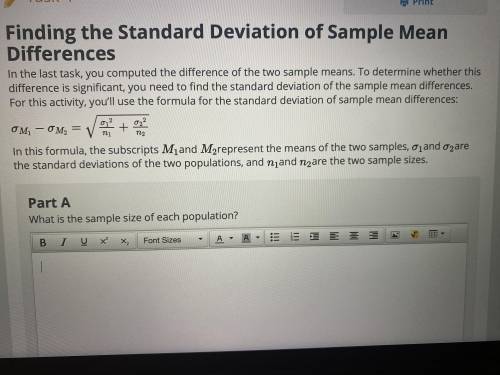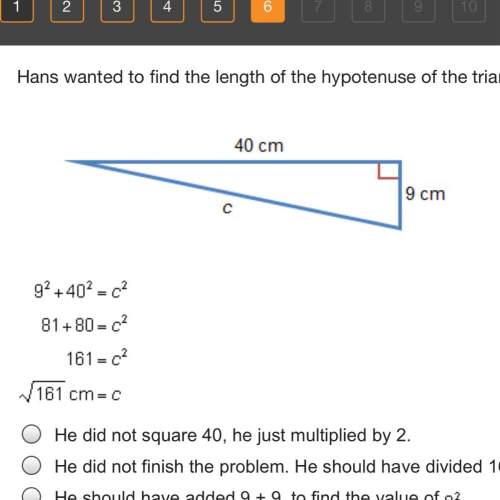Part A:
What is the sample size of each population?
Part B:
Use the standard De...

Mathematics, 28.04.2021 06:10 ronnie7898
Part A:
What is the sample size of each population?
Part B:
Use the standard Deviation values of the two samples and find the standard deviation of the sample mean differences. Round your answer to two places.
sample | Standard Deviation
red box | 3.868
blue box| 2.933


Answers: 1


Other questions on the subject: Mathematics


Mathematics, 21.06.2019 16:00, stormhorn491
Question part points submissions used suppose that 100 lottery tickets are given out in sequence to the first 100 guests to arrive at a party. of these 100 tickets, only 12 are winning tickets. the generalized pigeonhole principle guarantees that there must be a streak of at least l losing tickets in a row. find l.
Answers: 2


Mathematics, 21.06.2019 19:30, Flaka2809
Asurvey of 45 teens found that they spent an average of 25.6 hours per week in front of a screen (television, computer, tablet, phone, based on the survey’s sample mean, which value could be the population mean? 2.3 hours 27.4 hours 75.3 hours 41.5 hours
Answers: 1
You know the right answer?
Questions in other subjects:

Mathematics, 09.12.2021 08:40

Mathematics, 09.12.2021 08:40

Biology, 09.12.2021 08:40



History, 09.12.2021 08:40




Spanish, 09.12.2021 08:40




